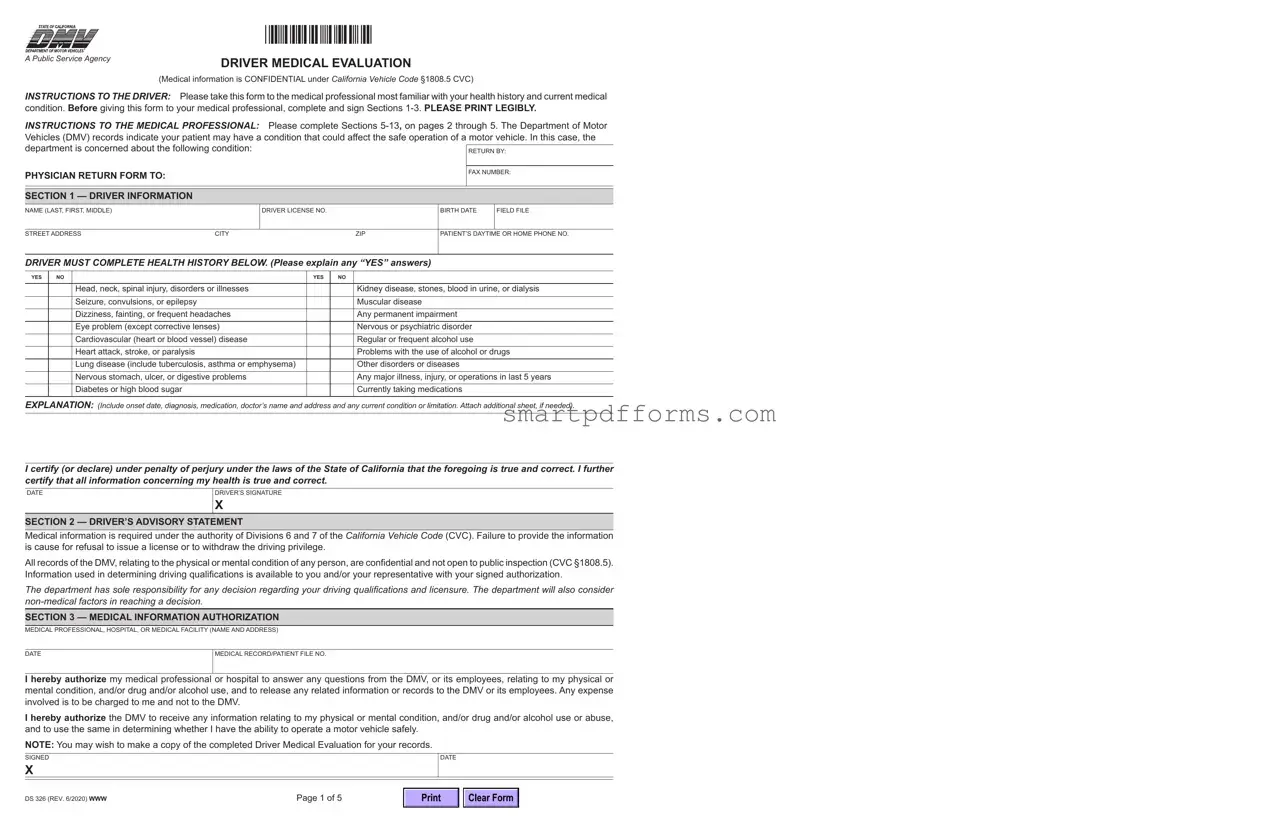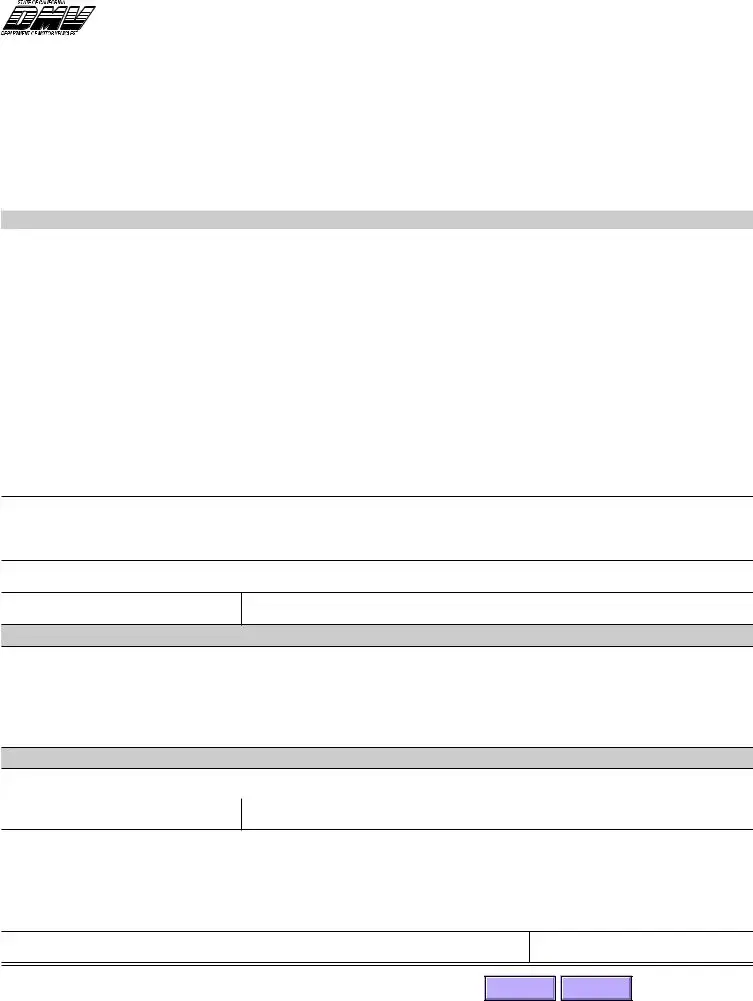SECTION 10 — LAPSE OF CONSCIOUSNESS DISORDER
PLEASE IDENTIFY THE LAPSE OF CONSCIOUSNESS DISORDER BEING REPORTED (Type of seizure, nocturnal, isolated,syncope, blackouts, |
DATE(S) OF EPISODE(S) IN THE PAST THREE YEARS |
etc.) |
|
|
|
|
|
DATE OF ONSET, IF KNOWN |
DATE AND TIME OF LAST EPISODE |
|
Please indicate the impairments identified below that are presently shown by your patient.
Sporadic loss of conscious awareness.......................................................................................
Loss of consciousness ...............................................................................................................
Impaired motor function..............................................................................................................
EFFECTS AFTER EPISODE
Confusion ...................................................................................................................................
Diminished concentration ...........................................................................................................
Diminished judgment ..................................................................................................................
Memory loss ...............................................................................................................................
If medication is taken to control seizures, are the serum levels recorded?................................
Are the serum levels medically acceptable? ..............................................................................
COMMENT
SECTION 11 — DIABETES
PLEASE INDICATE THE TYPE OF DIABETES THIS PATIENT HAS |
|
DATE OF DIAGNOSIS |
|
|
Type I |
Type 2 |
Gestational |
|
|
|
|
|
|
|
|
|
WHAT METHOD OF TREATMENT IS REQUIRED? |
|
|
|
|
Controlled diet |
Oral diabetes medication |
Insulin injections |
Insulin pump |
Other: |
HAS THIS PATIENT RECEIVED DIABETES EDUCATION FROM A HEALTH CARE TEAM?

 Yes
Yes  No
No
DOES THIS PATIENT COMPLY WITH THE PRESCRIBED TREATMENT PLAN?

 Yes
Yes  No
No
IF NO, PLEASE EXPLAIN
IS THE DIABETES MANAGED AT THIS TIME? |
|
|
Yes |
No |
|
|
|
|
IF YES, HOW LONG HAS DIABETES BEEN MANAGED OR MAINTAINED? |
IF NO, PLEASE EXPLAIN |
|
|
WHAT ARE THIS PATIENT’S FASTING BLOOD GLUCOSE LEVELS? |
AFTER HOW MANY HOURS OF FASTING? |
|
|
WITHIN THE LAST THREE YEARS, HAS THIS PATIENT EXPERIENCED |
REASON FOR EPISODES (e.g., non-compliance w/regimen, change in condition, insulin unavailable, illness, etc.) |
Hypoglycemic episodes? |
Hyperglycemic episodes? |
|
|
|
|
|
Please indicate the complications manifested by the hypoglycemic or hyperglycemic episodes and rate the severity of each.
NONE |
MILD |
MODERATE SEVERE UNCERTAIN |
Abdominal pain................................
Cognitive deficits .............................
Confusion ........................................
Disorientation...................................
Incoordination..................................
Hypoglycemic unawareness............
Lack of stamina ...............................
Loss of consciousness ....................
Stupor ..............................................
Visual changes ................................
Ketoacidosis ....................................
Slowed reactions .............................
Seizures...........................................
Weakness or fatigue........................
Other................................................




 Yes
Yes  No
No

 Yes
Yes  No
No
 Uncertain
Uncertain

 Yes
Yes  No
No
 Yes
Yes  No
No

 Yes
Yes  No
No